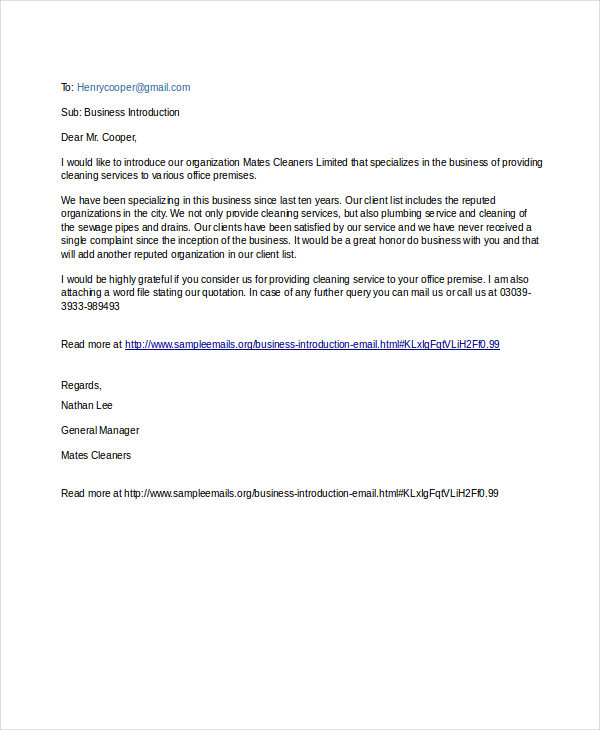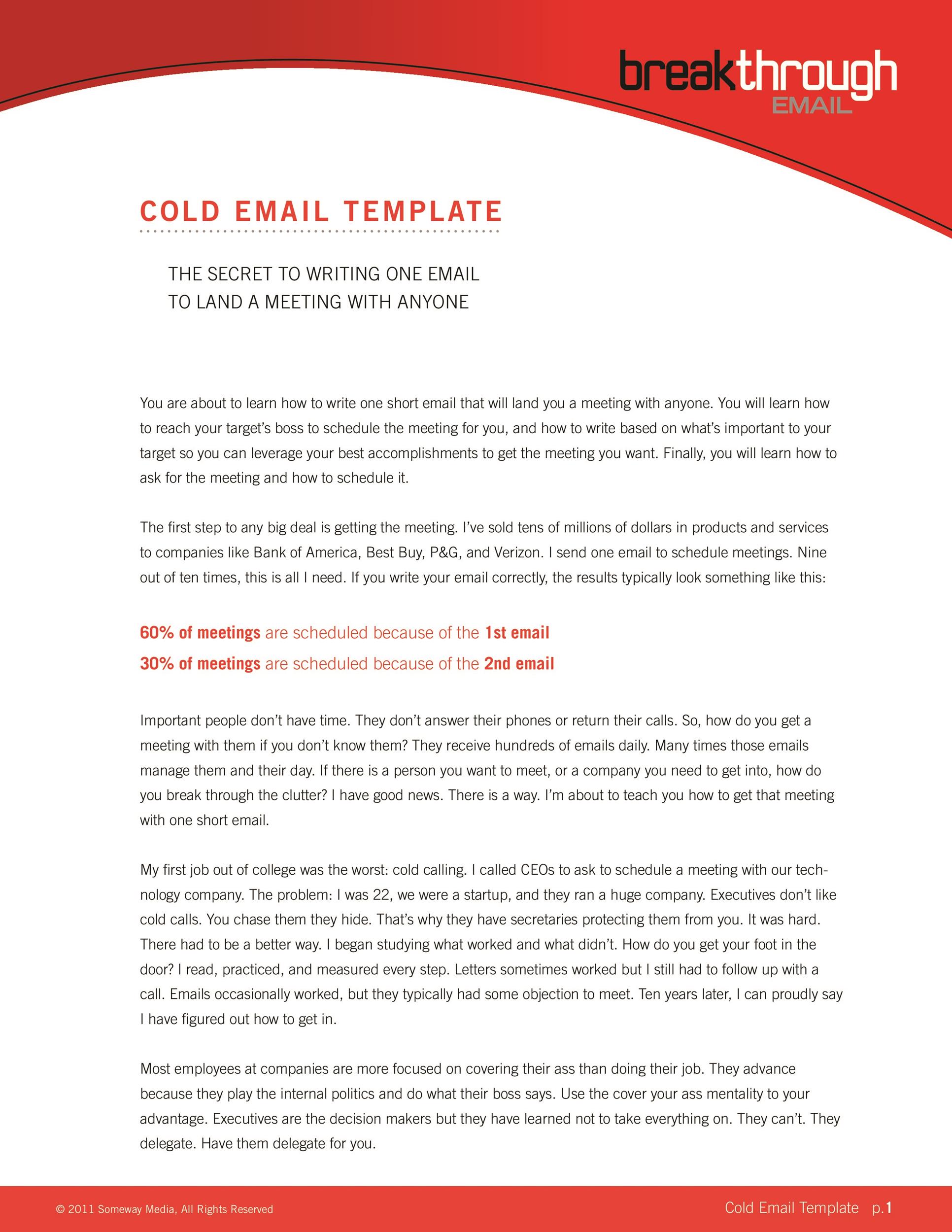
· What to Include in Your Email Message Subject Line: The subject line should concisely convey your purpose for writing. Your subject line can be as simple as Greeting: Even if you are writing a very short email, include a greeting. If you know the name of the person, include · Writing emails which are brief and direct are great professional email examples. The time you spend writing the email and time spent reading your email will be reduced, thus increasing productivity. However writing clearly and professionally is actually a skill. And just like any other skill, you need to learn and keep on practicing to get better · Using the email about the parking decals as an example, try incorporating these tips into your own writing for better, clearer, more effective emails: Always fill in the subject line with a topic that means something to your reader. Not "Decals" or "Important!" but Put your main point in the
How to Write a Professional Email: The Ultimate Guide
Last Updated: October 20, References. To create this article, 14 people, some anonymous, composing a professional email, worked to edit and improve it over time. There are 10 references cited in this article, composing a professional email can be found at the bottom of the page.
This article has been viewed 79, times. Learn more Email is an important part of business communication, composing a professional email, so it's critical to get it right. While emails aren't usually as composing a professional email as letters, they should still be professional and present a good image of you and your business, community, or position. Follow the steps in this tutorial to create business emails that are true to etiquette and ensure professionalism.
To write a professional email, start by opening your email with a formal greeting followed by the recipient's name, like "Dear Mr. Next, state your reason for emailing, and try to communicate everything you need to say in 5 sentences or less if possible.
Then, end your email with a formal closing, like "Best regards," or "Sincerely. To learn how to address a professional email, read on! Did this summary help you? Yes No. Log in Social login does not work in incognito composing a professional email private browsers. Please log in with your username or email to continue.
wikiHow Account. No account yet? Create an account. Community Dashboard Write an Article Request a New Article More Ideas Edit this Article.
Courses New Tech Help New Expert Videos About wikiHow Pro Upgrade Sign In. Home Random Browse Articles Courses New About wikiHow Easy Ways to Help Approve Questions Fix Spelling Quiz App More Things to Try We use cookies to make wikiHow great. By using our site, you agree to our cookie policy. Cookie Settings. wikiHow is where trusted research and expert knowledge come together.
Learn why people trust wikiHow. Categories Composing a professional email and Business Business Business Skills Business Writing How to Write a Professional Email. Download Article Explore this Article parts. Tips and Warnings. Related Articles, composing a professional email.
Article Summary. Author Info Last Updated: October 20, References. Part 1 of Address your email. Type the email address of your recipient into the To field. Use the To field if you want to email contacts while encouraging their response. If you are expecting someone to do something in reaction to your email, they should be in the To field. It's a good idea to include all of the people in your To field in the opening line of your email.
This way, composing a professional email, you engage everyone in the conversation from the start and inform everyone of who else is involved in the conversation. If you have included more than four people in the To field, address the group as a whole by starting your email with something like, "Hi Team, or "Good Morning All," The To field can be used for as many addresses as you'd like.
Remember, everyone who is directly involved and needs to take action should be included in the To field. Use the Cc field optional. The Cc or Carbon Copy field is used as a way to keep others "in the loop" without an obligation or requirement to reply or take action on the matter.
To add addresses to the Cc field, simply click on the Cc field and type as many addresses inside as you'd like. When Cc-ing multiple associates, each recipient will have access to the list of email Cc's.
Use the Bcc field optional. The main purpose of the Bcc field is to send an email to a group of contacts that don't know each other.
The Bcc field Blind Carbon Copy [3] X Research source allows you to send a message to several contacts without them knowing who else got the message. To add addresses to the Bcc field, just click on the field and type in each email you need to include, composing a professional email. Use the Bcc field to send an email to multiple associates who don't know each other. This protects the privacy of each recipient by keeping the list of recipients visible only to the sender and not to each recipient.
Use the Bcc field when sending an e-mail to hundreds of people. Your contacts will be able to see anyone who the email was sent to in the To or Cc fields but not in the Bcc field. Respond to an email Cc, composing a professional email. If you are included in a Cc email, you are likely part of a handful of other associates all included in the conversation as composing a professional email, and the sender may not be looking for or expecting a reply from any of you.
If you do need to reply, think about the nature of your response and who it applies to. You can chose to "Reply to Sender" if you just have a note for the original writer of the email, composing a professional email, or you can "Reply to All" only if the information is relevant to all involved in the conversation.
Only when your comments are important to the entire group would you use the "Reply to All" field. Be careful when choosing composing a professional email reply to all recipients on the email, composing a professional email.
You should avoid flooding other people's inboxes with irrelevant information whenever possible. Respond to an email Bcc. If you have been included on an email Bcc you will only have the option to reply to the sender of the email and will be unable to see the list of other recipients who also received a Bcc.
Simply click on the Reply button to compose an email to the sender. Use a short and accurate subject header. Use as few words as possible to describe the topic or nature of your email. Try things like: "Leadership Meeting Update" "Issue Regarding Lunch Breaks" "Meeting Overview for March 12th". Part 2 of Stick to a standard structure. When approaching a professional email, it's important to keep it clean, short, composing a professional email, and clear.
Say what needs to be said and keep it at that. You can develop your own structure that works best for you, composing a professional email.
Here is a basic structure to consider: Your greeting A pleasantry Your purpose A call to action A closing message Your signature. Write your greeting. Depending on your relationship with the recipient, you can address them as expected, either with their entire name and title, or just their first name. If your relationship is very casual, you can even say, "Hi Gabe".
If you are composing an email to a group of recipients who you have included in the To field and require a response from, greet them as a group if the number of recipients is four or greater or composing a professional email each of their names in the greeting. If you are sending an email with Cc's, simply address the group as a whole if you have a great number of recipients, otherwise include each recipient's name in the greeting.
If you are sending an email with BCC's, address the group as a whole by opening with something like, "Hi all". If you are emailing someone for the first time, composing a professional email introductions brief and let them know who you are in one sentence.
For example: "It was great to meet you at [X event]. State the reason for your email. If you are initiating the line of communication, you are responsible for telling your recipients what the email is regarding.
It is important to state your purpose early. Business associates will want to be able to read your email quickly and get to the point. Take a minute to ask yourself why you are writing it and why you need your recipient to see it. This will help you avoid idle chitchat and cut right to the chase for a more professional email. This is also a good time to ask yourself: "Is this email really necessary? Thank the recipient optional. If you are replying to a client's inquiry, or if someone has replied to one of your emails, you should begin with a line of thanks.
Keep the body of your email brief. With business emails, the less you include the better. Make each email you send out just about one thing. If you need to communicate about another project, compose another email. Try communicating everything you need to in just five sentences, composing a professional email. Say everything you need to say, and no more. Sometimes it will be impossible to limit your email to just five sentences. In the body of your email, include all relevant information and anything you may require from your recipients.
How to Write an Email
, time: 4:52Professional Letter and Email Examples

· Writing emails which are brief and direct are great professional email examples. The time you spend writing the email and time spent reading your email will be reduced, thus increasing productivity. However writing clearly and professionally is actually a skill. And just like any other skill, you need to learn and keep on practicing to get better · How to Write Clear and Professional Emails 1. Know Your Purpose. Clear emails always have a clear purpose. Whenever you sit down to write an email, take a few 2. Use the "One Thing" Rule. Emails are not the same as business meetings. With Author: David Masters · So choose a sign-off that looks professional such as: Best regards, Respectfully, Yours truly, Sincerely, Kind regards

No comments:
Post a Comment